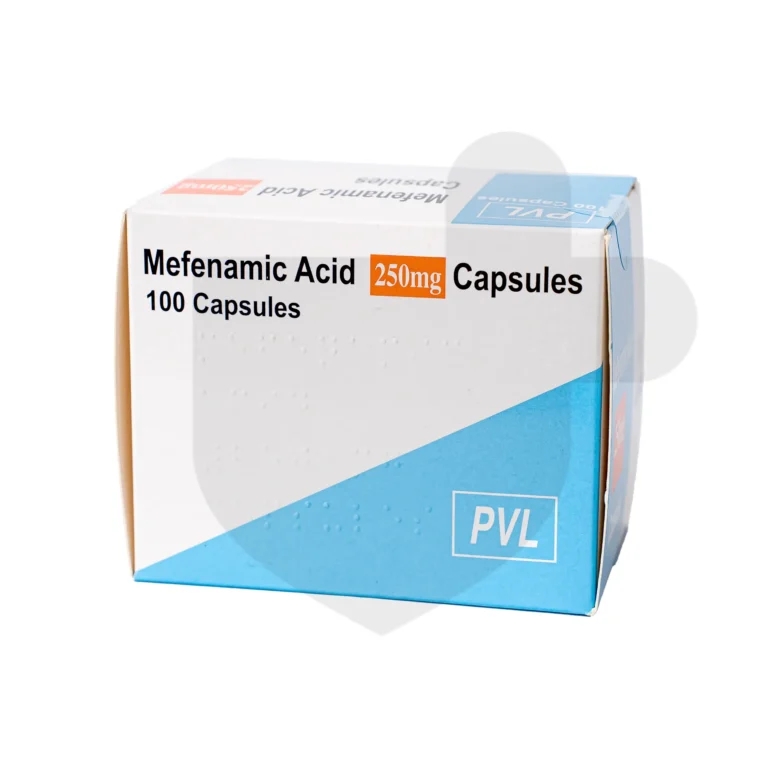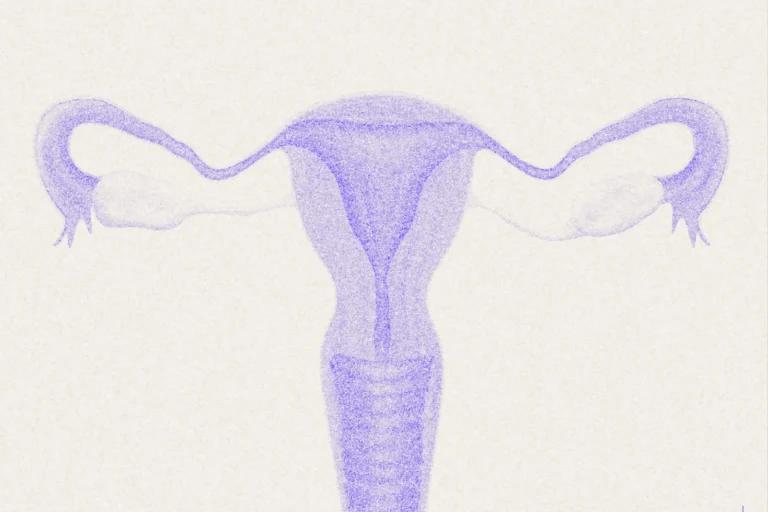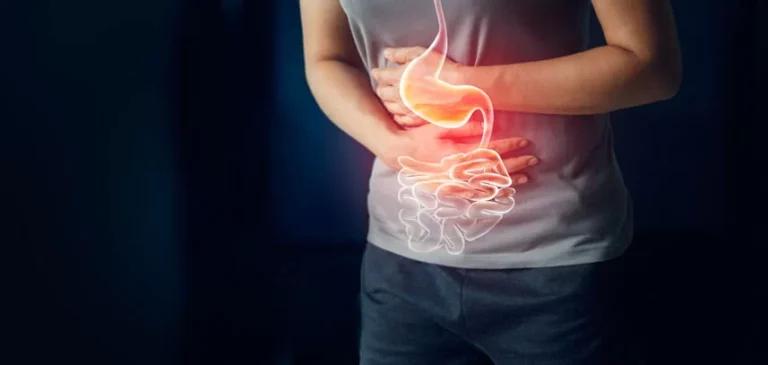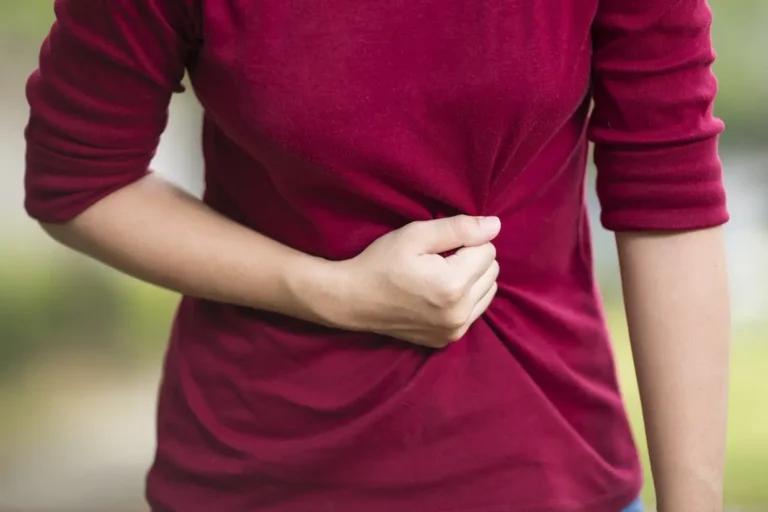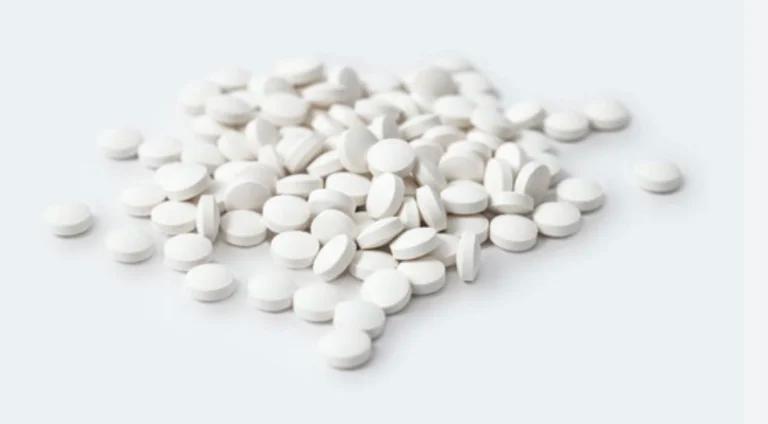Get Treated for Period Pain
GET TREATED CONVENIENTLY
Available Treatments for Period Pain
SAFE PRESCRIBING
Get Started With the Right Treatment for You
MEDICAL INFORMATION
Period Pain Key Facts
Menstrual pain or Period Pain is a common problem for many women. Pain can range from mild to severe, and can affect the ability to carry out day-to-day activities. Here, we will take a look at the causes, symptoms and treatment options available for menstrual pain.
What is Menstrual pain?
Menstrual pain (dysmenorrhea), is the pain women may feel during their menstrual cycle. It normally occurs one or two days before or during menstruation. The pain can range from mild to severe pain, which interferes with day-to-day life.
Causes of Menstrual Pain
Prostaglandins and uterine contractions
The main cause of menstrual cramps is prostaglandins, which are produced in the uterus lining. Prostaglandins help trigger contractions and shedding of the lining in the uterus, but excess prostaglandins can increase the intensity of the contractions, causing Period Pain.
Other underlying conditions
Other underlying medical conditions that may contribute to menstrual pain include:
- Endometriosis: Tissue similar to the uterus lining grows outside the uterus, causing inflammation
- Adenomyosis: Endometrial tissue is present within the uterus wall, leading to painful and heavy periods
- Uterine fibroids: Non-cancerous growths in or on the uterus, that can cause pain and heavy bleeding
- Pelvic inflammatory disease (PID): Infection of the womb, ovaries and fallopian tubes, often due to STIs (sexually transmitted infections), which may cause pelvic pain
- Cervical stenosis: Narrowing of the cervix, blocking the flow of blood and causing pain
- Irregular periods
- Intrauterine devices (IUD)
Types of Menstrual Pain
Primary Dysmenorrhea
Primary dysmenorrhea occurs without any underlying medical conditions and is classed as a normal part of the menstrual cycle. It normally starts during adolescence when menstruation begins, but improves with age or after childbirth. Other symptoms linked to primary dysmenorrhea include nausea, tiredness, headache, and diarrhoea.
Secondary Dysmenorrhea
Secondary dysmenorrhea is caused by an underlying medical condition (such as endometriosis, adenomyosis, uterine fibroids, pelvic inflammatory disease (PID), and cervical stenosis), normally occurs later in life, tends to get worse over time and is often more severe.
Signs and symptoms
- Cramping in the lower abdomen
- Throbbing pain that spreads to the lower back or thighs
- Back pain
- Bloating or diarrhea
- Headache, dizziness, nausea, vomiting
- Tiredness
- Mood swings
- Irritability
Speak to a healthcare professional if you have any of the following symptoms:
- Pain that interferes with your daily activities
- Pain not relieved with over-the-counter medication
- Symptoms that become worse or more severe
- Pain outside of your normal menstrual period
- Unusual vaginal discharge or bleeding
- Fever, severe nausea or vomiting
- Fainting or loss of consciousness
- Rapid heartbeat or palpitations
- Difficulty breathing
Diagnostic tests for Dysmenorrhea
- Pelvic ultrasounds of the reproductive organs, to identify structural abnormalities, fibroids or cysts
- Magnetic resonance imaging (MRI) to provide information about suspected underlying conditions
- Laparoscopy for direct visualization of the pelvic organs
These tests will help to identify any underlying causes and the development of a treatment plan.
Lifestyle changes for Menstrual Pain management
- Exercise and physical activity: Exercise promotes the release of endorphins, which improve blood circulation, reduce muscle tension, and enhance mood. You should aim for around 30 minutes of moderate-intensity aerobic exercise
- Stress reduction techniques: Deep breathing exercises, meditation, yoga, or mindfulness, can promote relaxation
- Sleep and rest: Create a comfortable sleep environment and practice good sleep hygiene
- Dietary considerations: Maintain a balanced diet high in fruits, vegetables, whole grains, and lean proteins and limit processed foods, sugary snacks, caffeine, and alcohol
- Heat therapy: Use heating pads, hot water bottles, hot baths, or warm towels to help relax muscles, improve blood flow, and reduce cramping
Over-the-counter medications for Menstrual Pain
Over-the-counter painkillers such as non-steroidal anti-inflammatory drugs (NSAIDs) and paracetamol are recommended for menstrual pain relief.
Non-steroidal anti-inflammatory drugs (NSAIDs)
NSAIDs, such as ibuprofen and naproxen, are effective for the reduction of menstrual pain. These relieve inflammation, reduce uterine contractions and pain.
Hormonal birth control as a treatment option
These regulate hormone levels and reduce the intensity of uterine contractions.
- Combined oral contraceptives: Birth control pills help regulate the menstrual cycle, reduce the production of prostaglandins, and reduce menstrual pain
- Progestin-only methods: The mini-pill, IUDs, or implants, can also be effective for the management of menstrual pain. These thin the lining of the uterus, reduce the production of prostaglandins, and prevent ovulation
Alternative and complementary therapies
- Herbal supplements and vitamins: Thiamine and magnesium supplements may relieve menstrual pain, although more research is needed. Consult a healthcare provider before starting any new supplement, as they may interact with other medications or cause side effects
- Acupuncture and acupressure: These involve the stimulation of specific points on the body to promote pain relief and overall well-being
Surgical interventions
- Procedures for endometriosis may include a laparoscopy or excision to remove or destroy the tissue
- Uterine artery embolization involves injecting small particles into blood vessels supplying fibroids. This blocks their blood supply, causing them to shrink
- Hysterectomy (complete removal of the uterus), providing permanent relief from menstrual pain
Conclusion
Understanding the causes, symptoms, and treatments available for Period Pain is essential when it comes to managing menstrual pain. Speak to your healthcare provider if you have severe, ongoing, or menstrual pain that is getting worse.
Sources
Medical Disclaimer
NowPatient has taken all reasonable steps to ensure that all material is factually accurate, complete, and current. However, the knowledge and experience of a qualified healthcare professional should always be sought after instead of using the information on this page. Before taking any drug, you should always speak to your doctor or another qualified healthcare provider.
The information provided here about medications is subject to change and is not meant to include all uses, precautions, warnings, directions, drug interactions, allergic reactions, or negative effects. The absence of warnings or other information for a particular medication does not imply that the medication or medication combination is appropriate for all patients or for all possible purposes.
Related Articles
Service Guide
Everything You Need to Know About Getting Treated Privately for Period Pain
What does the Get Treated Privately service for Period Pain do?
The Get Treated Privately service is a private prescribing service which is designed for adults aged 18 years and over, who are experiencing health issues and who would like to receive a fast-track assessment and if applicable, a treatment plan from a qualified prescribing clinician. Treatments for Period Pain are dispensed and delivered to your home or workplace from our regulated online pharmacy.
Is this a safe Period Pain prescribing service?
Yes. Our formulary of medications prescribed for Period Pain are controlled, governed, and continuously risk-assessed by our Medical Director, Dr Ihtesham Sabri. Unlike other prescribing services which operate using faceless questionnaires, our Period Pain prescribing service is conducted through remote video consultations, also known as synchronous consultations. This builds patient safety and prescribing appropriateness into our service, ensuring our prescribing clinicians can be satisfied with who and what they are treating. There is no guarantee of supply of medications, and any prescriptions supplied are at the sole discretion of our clinician prescriber. There is no charge for the Period Pain consultation.
What is a prescribing clinician and is it safe for me to use them on the NowPatient platform?
Our prescribing clinicians are board-certified pharmacists, nurses, or doctors who can also prescribe any medicine for any medical condition, subject to accepted accreditation and good clinical practice. They are all registered with their respective regulatory bodies. For example, a pharmacist independent prescriber is registered with the General Pharmaceutical Council (GPhC). Each prescribing clinician undergoes an extensive background check including a disclosure and barring service check (DBS). In addition, they undergo a rigorous license verification process. When you book an appointment with our prescribing clinicians you will see their full name, license number, and any specialized credentials they have.
Is the service available worldwide?
Yes, you can get treated privately for Period Pain worldwide.
Do I need to pay for this service?
Yes. This is a private service. You do not need to pay for the consultation. You only pay for the cost of the Period Pain treatment that you are prescribed.
How do I book a consultation?
Once you have logged into your account, you will need to navigate to the Get Treated Privately service card which is located as a service item on the dashboard.
Using the action button on the service card, you can select one of the following – ‘Search Treatments’ or ‘Search Conditions’. From here you can search for Period Pain.
Depending on the search type and the product/condition that you would like to get treated, you will be taken to a consultation booking screen. Follow the simple steps to complete your booking. During the booking confirmation, you will be able to select a date and time that is convenient for you, along with the preferred language and gender of the prescribing clinician you wish to choose. You will then see a list of all available expert clinicians who are trained to assess the medication or condition chosen. Once you have confirmed your booking, you will see a summary of the appointment including preliminary information about the consultation. At this point, you will also be able to add a reminder to your calendar. Always ensure your account health profile is up to date before any consultation. This ensures that our clinicians have the most up-to-date information about your current health status and anything that may influence their prescribing decisions. You will receive a push notification, SMS notification and email reminding you of your consultation, 30 minutes before the virtual consultation is due to start.
Depending on certain medications which require our clinicians to have your up-to-date blood pressure readings, you may be required to submit a virtual blood pressure check, using your smartphone or device. We will provide you with full instructions, when this is required.
What happens during the remote video consultation?
During the consultation, the clinician will ask you a series of questions that will allow the clinician to assess your condition and potential treatment options for Period Pain. At the end of the consultation, the clinician will decide which treatment options are safe and suitable option for you.
If it is, the clinician will discuss the treatment option, so that you can jointly agree on the treatment plan. Once you have jointly agreed on a treatment plan, the clinician will issue a prescription treatment for your Period Pain which will be available in your Cart at the end of the consultation.
Also, with your consent, the clinician may wish to inform your doctor of the treatment that was prescribed. We recommend that you agree to this since your doctor is responsible for your overall care and they should have a record of this consultation and medication prescribed. In addition, our clinician may take the opportunity to advise you on your overall health including advice on healthy living or stop smoking.
What happens at the end of the Period Pain consultation?
At the end of the consultation, you will receive a notification which will summarise the outcome. It will also advise you if any referrals were made to your doctor, along with any other advice that was given to you by the clinician.
If a referral letter was issued to your doctor, you will be able to view a copy of this in the ‘Documents’ section of the dashboard.
If you were prescribed a treatment, it will now be available in your Cart.
When you go to your Cart, you will be able to select the treatment, checkout and make payment. Once the checkout is complete, your prescription order will be sent to our regulated online pharmacy for processing.
What if the prescriber does not prescribe a treatment for Period Pain?
We operate a safe prescribing service. This means that our prescribing clinicians always exercise their clinical judgment when prescribing . Unfortunately, we do not operate a self select service where you can choose a medication and simply buy. If the clinician that sees you does not prescribe anything, then you will not be charged.
Will I get status updates for my order?
Yes. When your Period Pain treatment is approved, and after you have checked out and paid for your order, we will keep you fully updated with the status of your order. Every time the status of your order changes, you will be notified immediately. These notifications will appear in the ‘Notification Feed’ section on the dashboard.
How will my Period Pain treatment be delivered?
All orders are shipped in discreet and unmarked packaging. This means it is suitable for delivery wherever you require (home, work, or a neighbour).
For thermo-sensitive orders (e.g. Insulin or weight loss injections) we use cold chain-validated packaging. Your parcel will normally receive an estimated delivery window from the courier on the day of delivery.
For your protection and safety, your first order can only be delivered to the address that is registered with NowPatient. Future orders can be delivered to any other address, for example, your workplace.
Do you ship cold-chain or temperature sensitive products?
Yes. We use a specialist courier service for all thermo-sensitive deliveries. This is to ensure that cold chain integrity is always maintained and thus the product quality, safety and efficacy.
Learn more about how we handle the delivery of temperature sensitive products.
Where do you deliver?
We currently deliver to all postcodes/zipcodes worldwide. Some postcodes in rural areas may have a slightly longer delivery time.
When will my order arrive?
We aim to ship all orders placed Monday – Friday before 3pm on the same day. Orders placed outside these times will be shipped the next working day. All deliveries are shipped by Royal Mail, which delivers Monday through Saturday in the UK. For deliveries outside of the UK, please check with your national postal service for accurate delivery days.
Our delivery options have the following delivery times:
- UK – Royal Mail Tracked 24 & Signed for Delivery – Next day delivery
- Europe – Royal Mail Tracked – Typical delivery of 3-5 working days
- Worldwide – Royal Mail – Typical delivery of 5-7 working days. If a tracked option is available for your country via Royal Mail, this service will be applied.
What should I do if my order has not arrived?
Delivery is normally made promptly after your dispatch notification is received. You can check the tracking details of your Period Pain order in the ‘Notification Feed’ section of the dashboard, at any point after dispatch.
Unfortunately, packages can sometimes get lost in the delivery system. If after 10 days you have not received your delivery, please contact us and we will do all we can to resolve the problem.
Can you prescribe GLP-1 weight loss injections?
Yes. However, with GLP-1 weight loss medications, the license requires that there are support resources put in place as part of the plan including coaching for a healthy lifestyle, exercise, and diet. Our clinicians will discuss this with you, if you are prescribed this type of treatment.
You can learn more on our Weight Loss Programs feature page.
What’s included with my order?
If you are ordering a treatment for Period Pain, your order will contain your medication only.
If you are ordering weight loss injections, your order will contain:
- Your prescription of pre-filled weight loss injection pens
- Needles
- Sharps bin for safe disposal of needles (if ordered as part of the bundle)
Can I reorder my medication, if I have already been prescribed a course?
Yes. However, as a responsible prescribing service, we do not issue more than one monthly cycle of medication at a time.
This means that, if you would like to reorder, you will need to rebook a consultation.
This is important, because it allows our clinicians to keep track on the progress of your treatment plan and ensure that the medication remains safe and effective for you.
What is the earliest I can reorder my medication or treatment?
14 days after you have received your first monthly supply of medication, we will send you a notification to advise you that you are eligible to reorder your medication. To ensure that we are able to safely prescribe the Period Pain medication for the next supply, you will need to rebook a consultation.
This ensures that our clinician can check in on your treatment plan and ensure it is working as intended and continues to be safe, suitable and appropriate for you.
How do I reorder my Period Pain treatment?
When you are eligible to reorder your next Period Pain prescription, we will send you a notification reminder. This notification reminder will request that you book a consultation with a NowPatient Clinician.
You should book a suitable time and date for the consultation.
At the end of the consultation, the clinician may advise you to either
- Stop the treatment
- Stay on the current dose
- Increase the dose
If our clinician deems it safe for you to continue the medication used to treat Period Pain, the prescription will be added to your cart, from where you can checkout.
Delivery will be made in line with our delivery timescales.
As a responsible prescribing service, we will always monitor your Period Pain treatment plan to ensure that it remains safe, effective and suitable for you.
How do I reorder weight loss medication?
Our weight loss programs are built to closely monitor treatment progress and safety. Please refer to the Weight Loss Programs Service Guide that explains how you can reorder or step edit your dose.




